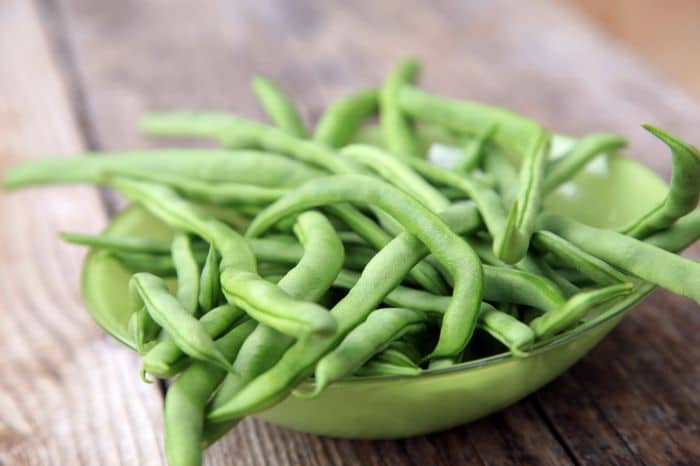top of mind news
- Opinion: Wall Street is ruining the restaurant industry.
- Tyson overcomes market challenges, ends the fiscal year on a high note
- 5 Ways Smart Managers Cultivate New Ideas In Their Teams
- Starbucks Laying Off 5 Percent of Corporate Employees
- Hurry! There are 50+ days left to Capture 2018 Tax Benefits!
the farm
Poultry
 Chicken production for the week ending November 3rd rose .3% from the prior week and was .3% larger than the same week last year. The six-week moving average for chicken output ending November 3rd stands at 1.6% more than 2017. More disposable dollars for the U.S. consumer due to the healthy economy is likely displacing chicken demand for beef. The chicken breast markets are pricing at their lowest level in at least 18 years. The bone-in chicken wing markets are the cheapest for this time of year since 2014. And recent history suggests that chicken breast and wing prices can still drop through year end. However, these low prices for breast meat and wings should boost demand. So, any remaining price declines from here should be minimal.
Chicken production for the week ending November 3rd rose .3% from the prior week and was .3% larger than the same week last year. The six-week moving average for chicken output ending November 3rd stands at 1.6% more than 2017. More disposable dollars for the U.S. consumer due to the healthy economy is likely displacing chicken demand for beef. The chicken breast markets are pricing at their lowest level in at least 18 years. The bone-in chicken wing markets are the cheapest for this time of year since 2014. And recent history suggests that chicken breast and wing prices can still drop through year end. However, these low prices for breast meat and wings should boost demand. So, any remaining price declines from here should be minimal.
Beef
 Last week’s cattle slaughter was 2.6% larger than last year, but lighter carcass weights continue to temper year-over-year beef output gains which were up only 1.9% vs. 2017. The lighter cattle have done little to derail phenomenal carcass grading, with both USDA prime and USDA choice both reaching record highs during early November. Following the Thanksgiving holiday, retail beef features are expected to increase especially for roasts which are an attractive item for winter holiday parties. Most of the sales on those items have already been made, but further buying is anticipated to support the USDA wholesale boxed beef cutouts into early December before easing into year’s end.
Last week’s cattle slaughter was 2.6% larger than last year, but lighter carcass weights continue to temper year-over-year beef output gains which were up only 1.9% vs. 2017. The lighter cattle have done little to derail phenomenal carcass grading, with both USDA prime and USDA choice both reaching record highs during early November. Following the Thanksgiving holiday, retail beef features are expected to increase especially for roasts which are an attractive item for winter holiday parties. Most of the sales on those items have already been made, but further buying is anticipated to support the USDA wholesale boxed beef cutouts into early December before easing into year’s end.
Pork
 Last week pork production increased modestly from the previous week but was 3% larger than the same week last year. If current import tariffs from various countries remain in place for U.S. pork, domestic production could become burdensome for the marketplace into early 2019. Despite increased activity for holiday deliveries, the ham markets remain depressed. Yet, foreign buyers of U.S. hams are noticing the lower prices, with four-week running ham export sales up considerably versus a year ago. Pork belly prices are seasonally declining.
Last week pork production increased modestly from the previous week but was 3% larger than the same week last year. If current import tariffs from various countries remain in place for U.S. pork, domestic production could become burdensome for the marketplace into early 2019. Despite increased activity for holiday deliveries, the ham markets remain depressed. Yet, foreign buyers of U.S. hams are noticing the lower prices, with four-week running ham export sales up considerably versus a year ago. Pork belly prices are seasonally declining.
The sea
Seafood
 Snow crab prices continue to track above year ago levels but well off the highs made earlier this year. During September, U.S. snow crab imports were 10.5% bigger than the previous year, but it took historically expensive prices to encourage those imports. The upside in snow crab leg prices may only be modest, however, as high prices curb demand.
Snow crab prices continue to track above year ago levels but well off the highs made earlier this year. During September, U.S. snow crab imports were 10.5% bigger than the previous year, but it took historically expensive prices to encourage those imports. The upside in snow crab leg prices may only be modest, however, as high prices curb demand.
The Garden
Produce
 Avocado supplies have tightened in the U.S. due in part to harvest interruptions in recent weeks in Mexico. Avocado shipments from Mexico could remain erratic in the near term which could cause prices to be volatile. Shipments from Mexico have been so light as of late that the USDA has stopped reporting pricing. Once avocado shipments resume at a normalized level, it should lead to sharply lower avocado prices. Better lettuce production is weighing on prices. The chief lettuce harvest area will transition to Yuma/Imperial Valley during the next several weeks.
Avocado supplies have tightened in the U.S. due in part to harvest interruptions in recent weeks in Mexico. Avocado shipments from Mexico could remain erratic in the near term which could cause prices to be volatile. Shipments from Mexico have been so light as of late that the USDA has stopped reporting pricing. Once avocado shipments resume at a normalized level, it should lead to sharply lower avocado prices. Better lettuce production is weighing on prices. The chief lettuce harvest area will transition to Yuma/Imperial Valley during the next several weeks.
The kitchen sink
Dairy
 The CME butter markets have been choppy, and this year’s pre-holiday seasonal rally has been lackluster. Export interest for butter has been strong. U.S. butter exports in September were up 169.4% versus the prior year but imports were 49.2% more than last year and a record for the month. Spot butter prices usually peak in early December. The CME cheese markets remain soft. Cheese exports in September were down 9.2% from a year ago but still historically solid. Cheese prices typically decline for the balance of the year, but notable losses from current price levels may be modest.
The CME butter markets have been choppy, and this year’s pre-holiday seasonal rally has been lackluster. Export interest for butter has been strong. U.S. butter exports in September were up 169.4% versus the prior year but imports were 49.2% more than last year and a record for the month. Spot butter prices usually peak in early December. The CME cheese markets remain soft. Cheese exports in September were down 9.2% from a year ago but still historically solid. Cheese prices typically decline for the balance of the year, but notable losses from current price levels may be modest.
Grains
 U.S. winter wheat planting for the 2019-20 crop is progressing and is entering its final stages. As of November 12th, 88% of the crop was in the ground. A total of 54% of the crop was rated in either good or excellent condition which compares to 51% the week prior. Wheat prices could remain range-bound into the winter.
U.S. winter wheat planting for the 2019-20 crop is progressing and is entering its final stages. As of November 12th, 88% of the crop was in the ground. A total of 54% of the crop was rated in either good or excellent condition which compares to 51% the week prior. Wheat prices could remain range-bound into the winter.
Oil
 WTI crude oil futures have collapsed in the last week and nearby futures hit the lowest level in 12 months. The U.S., Saudi Arabia and Russia, the world’s three largest producers, have all recently hit record output. Look for support at $54.50/bbl
WTI crude oil futures have collapsed in the last week and nearby futures hit the lowest level in 12 months. The U.S., Saudi Arabia and Russia, the world’s three largest producers, have all recently hit record output. Look for support at $54.50/bbl





